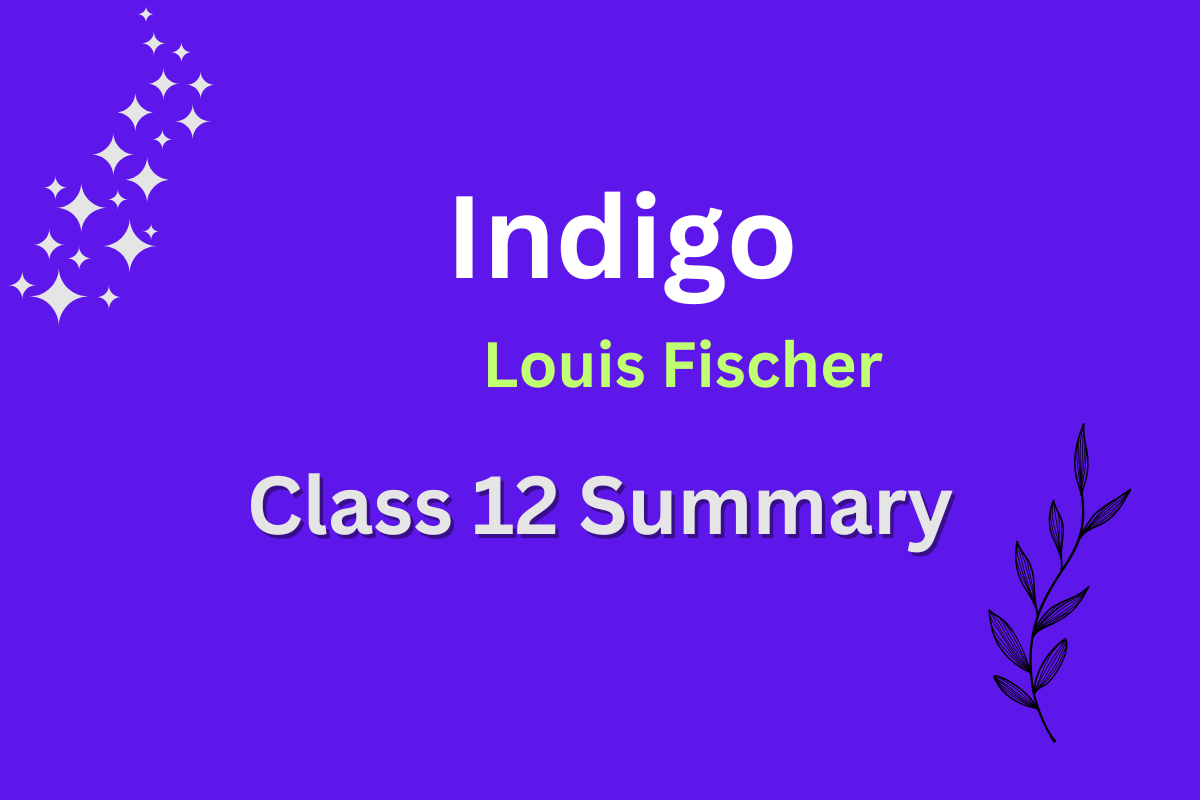The story “Indigo” is about Mahatma Gandhi’s struggle for the poor peasants of Champaran. The peasants were sharecroppers with the British planters and were forced to grow indigo according to an agreement. They suffered a great injustice due to the landlord system in Bihar. Gandhi waged a war for about a year against their atrocities and brought justice to the poor peasants.
The story begins with Rajkumar Shukla, a sharecropper from Champaran, visiting Gandhi in Lucknow. Shukla tells Gandhi about the plight of the peasants, who are being forced to grow indigo even though the price of indigo has fallen and the British no longer need it. Gandhi is initially reluctant to get involved, but Shukla eventually convinces him to travel to Champaran to investigate.
Indigo class 12 summary
When Gandhi arrives in Champaran, he is shocked by the conditions of the peasants. They are living in poverty and are often beaten by their landlords. Gandhi meets with the peasants and learns about their grievances. He also meets with the landlords, but they are unwilling to change their practices.
Gandhi decides to launch a satyagraha, or non-violent protest, against the landlords. He encourages the peasants to refuse to grow indigo and to resist the landlords’ attempts to force them to do so. The satyagraha is successful and the landlords are forced to back down.
The Champaran Satyagraha was a major victory for Gandhi and for the Indian independence movement. It showed that non-violence could be an effective tool for social change. It also helped to raise awareness of the plight of the poor peasants in India.
The story of the Champaran Satyagraha is a reminder of Gandhi’s commitment to social justice and his belief in the power of non-violence. It is also a reminder of the importance of fighting for the rights of the poor and marginalized.
Here are some of the key takeaways from the story “Indigo”:
- Gandhi was a compassionate and committed leader who was willing to fight for the rights of the poor and marginalized.
- Non-violence is an effective tool for social change.
- It is important to stand up for what is right, even in the face of injustice.
- The fight for social justice is never easy, but it is always worth it.
